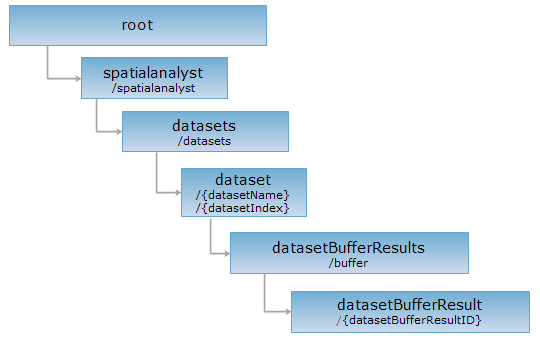
<datasetBufferresults_uri>/{datasetBufferResultID}[.<format>]
The datasetBuferResult resource represents a buffer analysis result.
Supported methods:
Supported output formats: rjson, json, html, xml.

Below is an example of performing an HTTP request on a URI with rjson as the output format. supermapiserver in the URI is the name of the server.
http://supermapiserver:8090/iserver/services/spatialanalyst-sample/restjsr/spatialanalyst/datasets/SamplesP@Interpolation/buffer/1.rjson
Gets the description information about the resource of a buffer analysis result.
Normal response code(s): 200.
Shown below is the response structure after a GET request is performed on the resource:
| Field | Type | Description |
| succeed | boolean | Whether the spatial analysis was successful. |
|
message |
String | The returned message when the spatial analysis failed. |
| dataset | String | The ID of the result dataset. |
| recordset | Recordset | The result record set for storing information about the spatial objects. When a post request is performed on the datasetBufferResults resource, the information on the objects in the result dataset is only displayed if the dataReturnMode attribute of the dataReturnOption field is set to return Recordset. |
Below is the returned result in RJSON format after a GET request is performed on the resource (Recordset is not returned in this case according to the parameter settings):
{
"dataset": "SamplePbuffer@Interpolation",
"message": null,
"recordset": null,
"succeed": true
}
Retrieves the operations and output formats supported by the resource.
Returns the same HTTP response header as GET does, but no response entity is included. HEAD request can be used to get metadata from the response message header without transporting the entire response content. Metadata includes information about the media type, character encoding, compression encoding, the length of the entity content, etc.
HEAD request can be used to check if the datasetBufferResult resource exists, or if the resource can be accessed by clients. It can also determine if the datasetBufferResult resource supports an output format <format> if performed on a URI with .<format> included.